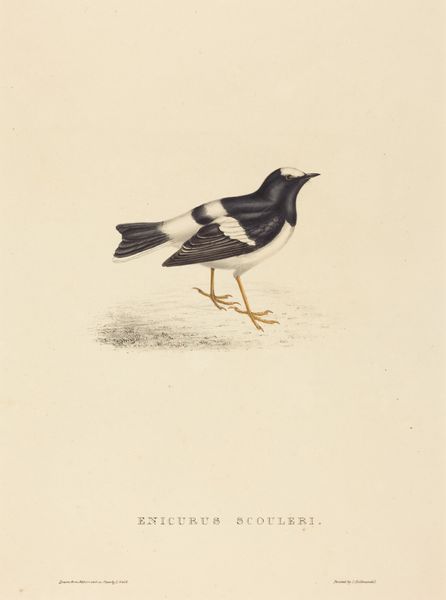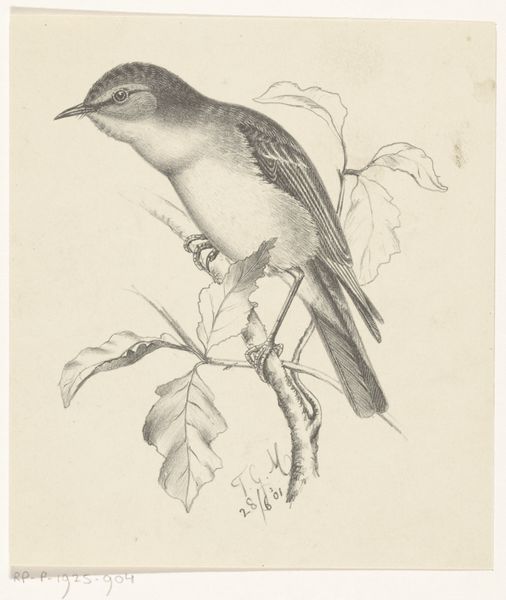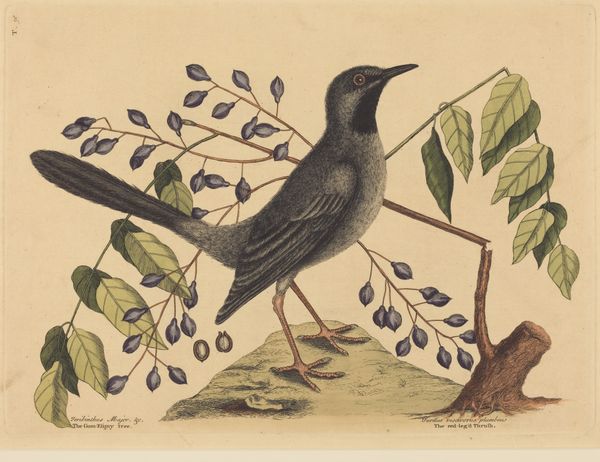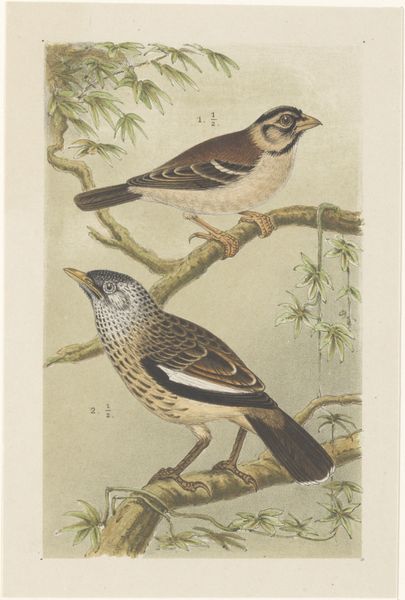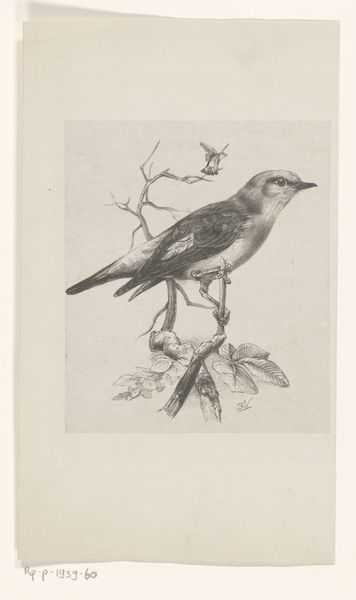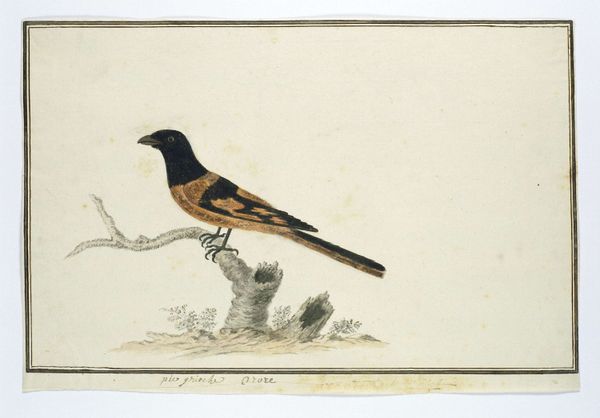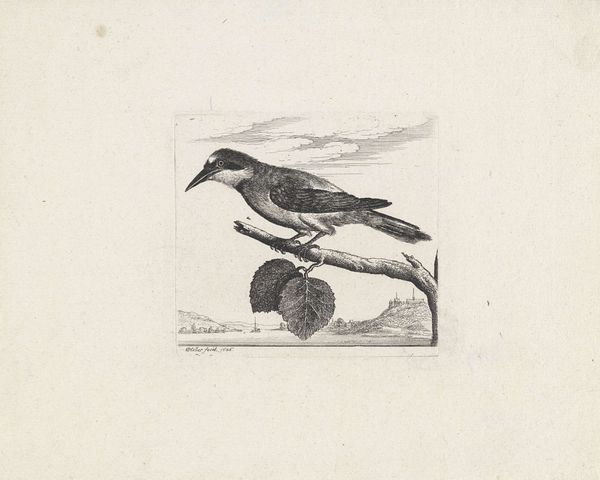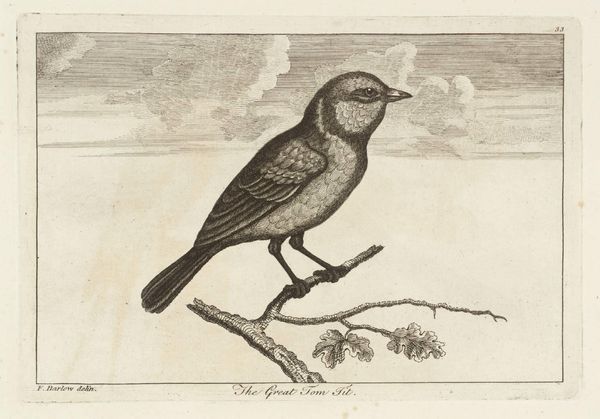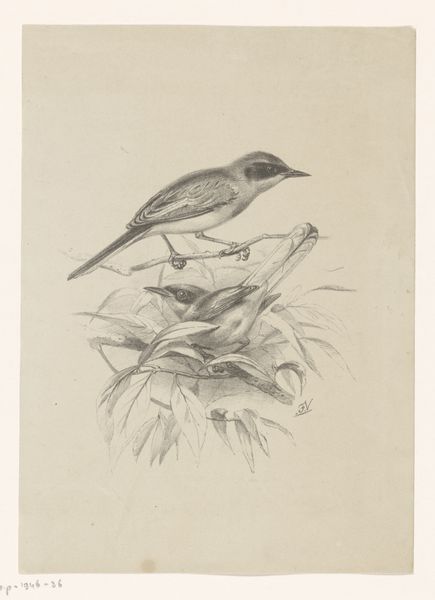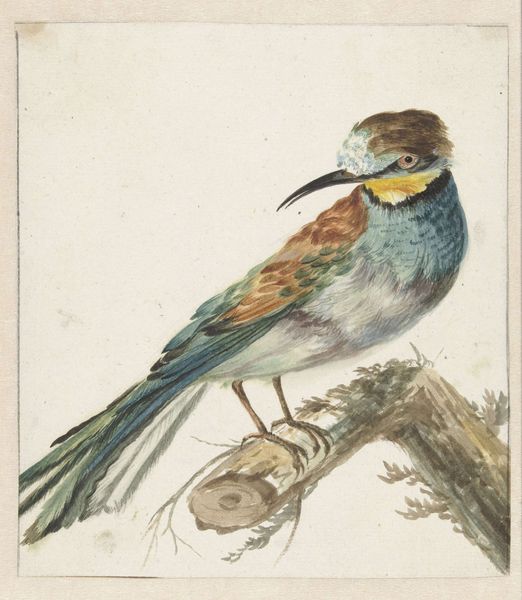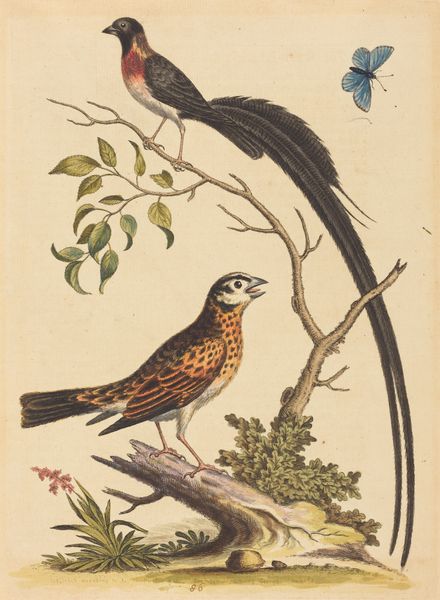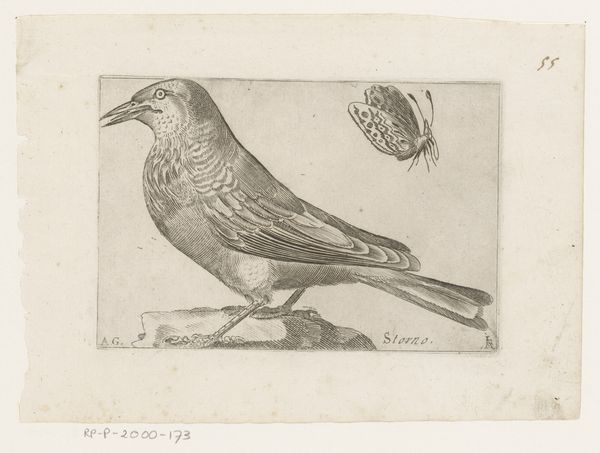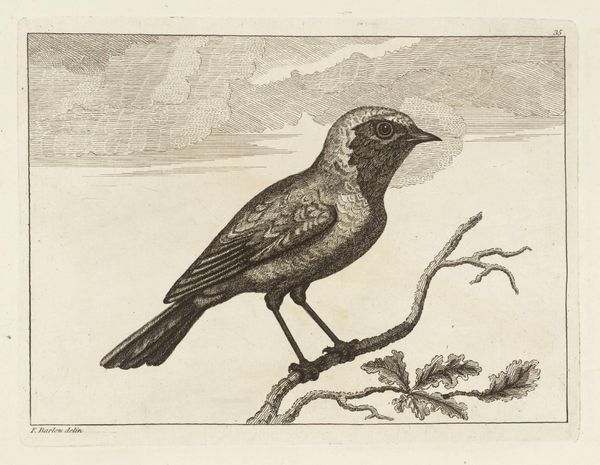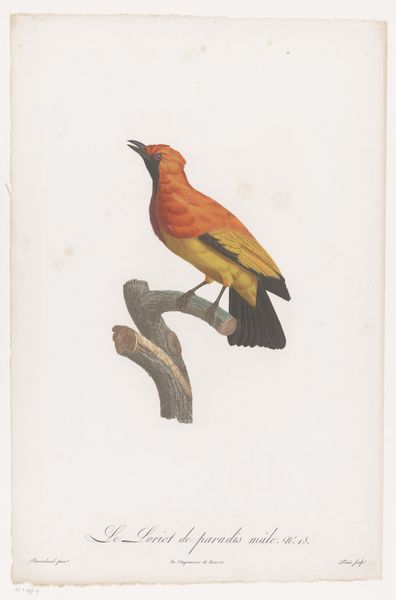
drawing, print, paper, engraving
#
portrait
#
drawing
# print
#
paper
#
academic-art
#
engraving
#
realism
Copyright: National Gallery of Art: CC0 1.0
Curator: Immediately I’m drawn to the elegance of the lines. The artist has used such precision in detailing the bird’s feathers. Editor: It’s deceptively simple, isn't it? This print of Elizabeth Gould's "Enicurus Maculatus", or Spotted Forktail, focuses so intensely on this single bird, isolated against a creamy, near-blank paper ground. It feels like we’re examining a specimen, rather than viewing it in a habitat. Curator: Absolutely. The focus elevates the bird, presenting it almost as an emblem. The stark black and white plumage, sharply contrasted, evokes a sense of duality, of the interplay between shadow and light. It mirrors, perhaps, our own internal contradictions. Editor: I’m curious about the printmaking process. I wonder about the division of labor and the resources required. How was this bird rendered? I'm keen to know about the materiality behind this realistic form of printmaking. Curator: Consider, though, how this seemingly simple depiction reflects the vast cultural project of natural history illustration during that period. This wasn’t merely about documentation; it was about ordering the natural world, assigning meaning and fitting each species into the grand scheme of creation. Look at that beak, its tiny perfection; it represents the meticulousness of the divine plan. Editor: Yes, but by isolating this "specimen," it pulls it out of any material conditions that support it: where did it feed, breed, what supports its existence? It ignores that material complexity of interrelation in nature to render it legible for its potential owner. Curator: Perhaps. But, also think about what remains beyond this seemingly objective surface. How do you feel viewing this "Spotted Forktail?" Editor: I feel curious about how something like this served both scientific study and an aesthetics for domestic consumption. Curator: And perhaps by studying the "Enicurus Maculatus", by delving into its symbolism and place within a larger framework, we gain a greater appreciation for both its beauty and its fragility. Editor: For me, understanding the means of its production lets me understand its relationship to empire, science, and our own material lives today.
Comments
No comments
Be the first to comment and join the conversation on the ultimate creative platform.
